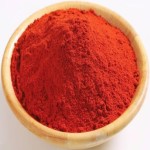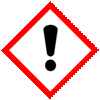CAS Number 6147-53-1 Cobalt Acetate Tetrahydrate and 71-48-7 Cobalt Acetate Anhydrous Manufacturers Exporters







CAS Number 6147-53-1 Cobalt Acetate Tetrahydrate and 71-48-7 Cobalt Acetate Anhydrous Manufacturer Exporter
For Properties Specifications of Cobalt Acetate Tetrahydrate Click Properties, Specifications of Cobalt Acetate Tetrahydrate Manufacturer.
For Uses of Cobalt Acetate Tetrahydrate Click Uses of Cobalt Acetate Tetrahydrate Manufacturer.
For For SDS MSDS Sheet of Cobalt Acetate Tetrahydrate Click SDS Safety Data Sheet MSDS Sheet of Cobalt Acetate Tetrahydrate Manufacturer.
The Properties and Specifications of Cobalt Acetate Tetrahydrate:
Specifications of Cobalt acetate tetrahydrate or Cobalt diacetate tetrahydrate:
Appearance: Reddish pink crystalline powder
Assay: 99.0- 102.0%
Chloride: 0.002% maximum.
Sulphate: 0.005% maximum.
pH (5% water): 6.0-8.0 maximum.
Lead: 0.001% maximum.
Copper: 0.002% maximum.
Nickel: 0.01% maximum.
Zinc: 0.01% maximum.
Iron: 0.001% maximum.
Magnesium: 0.005% maximum.
Calcium: 0.01% maximum.
Sodium: 0.05% maximum.
Potassium: 0.01% maximum.
The Uses of Cobalt Acetate Tetrahydrate:
Cobalt(II) acetate is used as an industrial catalyst. It is used as a precursor to various oil drying agents. It finds application in ion exchange agents, lubricants, plating agents and surface treating agents, greases, ink, toner, and colorant products.
The MSDS-SDS Hazard Statement of Cobalt Acetate Tetrahydrate:
Cobalt Acetate Tetrahydrate SDS, Safety Data Sheet
MSDS Sheet, Material Safety Data Sheet 10-Jan-23
Section 1: Product and Company Identification
Product Name & Other Names: Cobalt acetate tetrahydrate, Cobaltous acetate tetrahydrate,
CAS No.: 6147-53-1
EINECS, EC Number: 200-755-8
Molecular Weight: 249.08
Chemical Formula: (CH3COO)2Co-4H2O
Relevant uses and uses advised against (if any): Industrial and laboratory use.
Section 2: Hazards Identification
GHS, Globally Harmonized System Classification in accordance with 29 CFR 1910
Classification according to Regulation (EC) No 1272/2008
Acute toxicity, Oral (Category 4), H302
Skin irritation (Category 2), H315
Eye irritation (Category 2B), H320
Skin sensitization (Category 1), H317
Carcinogenicity (Category 2), H351
Labeling according to GHS & Regulation (EC) No 1272/2008
GHS Label Elements  Irritant |
GHS Label Elements |
Signal Words: Danger
Hazard statements:
H302: Harmful if swallowed.
H315 + H320: Causes skin and eye irritation
H317: May cause an allergic skin reaction.
H351: Suspected of causing cancer.
Precautionary statements:
P202: Do not handle until all safety precautions have been read and understood.
P260: Do not breathe dust/fume/gas/mist/vapors/spray.
P264 Wash thoroughly after handling.
P270: Do not eat, drink or smoke when using this product.
P271: Use only outdoors or in a well-ventilated area.
P280: Wear protective gloves/protective clothing/eye protection/face protection.
P301+P312: IF SWALLOWED: Call a POISON CENTER or doctor/ physician if you feel unwell.
P302+P352: IF ON SKIN: Wash with plenty of soap and water.
P304+341: IF INHALED: If breathing is difficult, remove victim to fresh air and keep at rest in a position comfortable for breathing.
P305+P351+P338: IF IN EYES: Rinse cautiously with water for several minutes. Remove contact lenses, if present and easy to do. Continue rinsing.
P308+313: IF exposed or concerned: Get medical advice/attention.
Section 3: Composition / Information on Ingredients
Product Name & Other Names: Cobalt acetate tetrahydrate, Cobaltous acetate tetrahydrate,
CAS No.: 6147-53-1
EINECS, EC Number: 200-755-8
Section 4: First Aid Measures
Always seek medical attention after first aid measures are provided.
Eyes: Immediately flush eyes with excess water for 15 minutes, lifting lower and upper eyelids occasionally.
Skin: Immediately flush skin with excess water for 15 minutes while removing contaminated clothing.
Ingestion: Call Emergency Medical immediately. Rinse mouth with cold water. Give victim 1-2 cups of water or milk to drink. Induce vomiting immediately.
Inhalation: Remove to fresh air. If not breathing, give artificial respiration.
Section 5: Fire Fighting Measures
It is non-flammable solid. When heated to decomposition, emits acrid fumes.
Protective equipment and precautions for firefighters: Use foam or dry chemical to extinguish fire. Firefighters should wear full firefighting turn-out gear and respiratory protection. Cool container with water spray.
Special hazards arising from the substance: Fumes, Carbon and Cobalt oxides.
Special Information: In the event of a fire, wear full protective clothing and NIOSH-approved self-contained breathing apparatus with full face piece operated in the pressure demand or other positive pressure mode. At high temperatures under fire conditions, it may produce toxic or irritating fumes.
Section 6: Accidental Release Measures
Personal precautions, protective equipment, and emergency procedures: Avoid dust formation. Avoid breathing dust/fumes/gas/mist/vapors/spray. Use individual protective equipment (waterproof boots, suitable protective clothing, safety glasses, etc.). Do not approach facing the wind.
Environmental precautions: Do not let the product enter drains, soil, or water sources.
Methods and materials used for containment Cleanup procedures and Storage: Contain spilled material. Cover with an inert, non-combustible absorbent material, (e.g. sand, earth, diatomaceous earth, vermiculite). Vacuum or sweep-up and remove to an approved disposal container.
Section 7: Handling and Storage
Precautions for safe handling: Apply according to good manufacturing and industrial hygiene practices. Ensure proper ventilation. Wash thoroughly after handling. Do not drink, eat, or smoke while handling. Avoid contact with skin, eyes, and clothing. Minimize dust generation. Avoid breathing dust/fumes/gas/mist/vapors/spray. Keep container tightly closed. Avoid ingestion and inhalation. Use individual protective equipment (waterproof boots, suitable protective clothing, safety glasses, etc.).
Conditions for safe storage, including any incompatibilities: Store in cool, dry, and ventilated area away from heat sources and protected from sunlight in tightly closed original container. Keep air contact to a minimum. Do not leave the material container open. Store protected from heat, sparks and ignition sources and incompatible materials. Avoid contact with skin and eyes. Avoid inhalation of dust/mist/vapor. Do not store with incompatible materials like strong oxidizing agents.
Section 8: Exposure Controls / Personal Protection
Exposure guidelines: Not Established.
Ventilation System: A system of local and/or general exhaust is recommended to keep employee exposures as low as possible.
Personal Respirators (NIOSH Approved): For conditions of use where exposure to dust or mist is apparent and engineering controls are not feasible, a particulate respirator may be worn.
Skin Protection: Wear protective gloves and clean body-covering clothing.
Eye Protection: Use chemical safety goggles and/or full face shield where dusting or splashing of solutions is possible. Maintain eye wash fountain and quick-drench facilities in work area.
Other Control Measures: Maintain good housekeeping in work area. Handle in accordance with good industrial hygiene and safety practice.
Section 9: Physical and Chemical Properties
Physical state and appearance: Solid. (Pink to Red Crystals or Powder.)
Odor: Odorless.
Odor threshold: Not available.
pH: Not available.
Relative density: 1.7
Melting point/freezing point: Not available.
Initial boiling point and boiling range: Not available.
Flash point: Not available.
Auto-ignition temperature: Not available.
Decomposition temperature: Not available.
Upper/lower flammability or explosive limits: Not available.
Vapor pressure: Not available.
Vapor density: Not available.
Evaporation rate: Not available.
Flammability (solid, gas): Not available.
Partition coefficient: n-octanol/water: Not available.
Solubility: Soluble in water.
Viscosity: Not available.
Section 10: Stability and Reactivity
Avoid heat and ignition sources.
Stability: Stable under normal conditions of use and storage.
Incompatibility: Heat and strong oxidizing agents.
Shelf life: Indefinite if stored properly.
Hazardous Decomposition Products: Carbon oxides, fumes and cobalt/cobalt oxides.
Hazardous Polymerization: Has not been reported.
Section 11: Toxicology Information
LD50 [oral, rat]; 708 mg/kg; LC50 [rat]; N/A; LD50 Dermal [rabbit]; N/A
Carcinogenicity: Group 2B: Possibly carcinogenic to humans by IARC.
Mutagenic Effects: Not available.
Developmental Toxicity: Not available.
Reproductive Effects: No information available.
Section 12: Ecological Information
Toxicity to fish: LC50 - Not Available.
Ecotoxicity (aquatic and terrestrial): Contains a heavy metal – toxic to terrestrial and aquatic plants and animals. Do not release to environment.
Persistence and Degradability: No information available.
Mobility: No information available.
Bioaccumulation/ Accumulation: No information available.
Results of PBT and vPvB assessment: No data available for assessment.
Section 13: Disposal Considerations
Check with all applicable local, regional, and national laws and regulations.
Section 14: Transport Information
DOT USA & ADR/RID Europe: Not dangerous goods
IATA
UN-No: UN3077
Proper Shipping Name: ENVIRONMENTALLY HAZARDOUS SUBSTANCE, SOLID, N.O.S.
Hazard Class: 9; Packing Group: III.
IMDG/IMO
UN-No: UN3077
Proper Shipping Name: ENVIRONMENTALLY HAZARDOUS SUBSTANCE, SOLID, N.O.S.
Hazard Class: 9; Packing Group: III.
Section 15: Regulatory Information
USA:
SARA 311/312 Hazard Categories: Acute Health Hazard, Chronic Health Hazard.
California Prop. 65 Components: This product does not contain any chemicals known to State of California to cause cancer, birth defects, or any other reproductive harm.
Section 16: Other Information
Disclaimer:
**************************
Our company provides this MSDS sheet in good faith but makes no representation as to its comprehensiveness or accuracy. This SDS sheet is intended only as a guide to the appropriate precautionary handling of the material by a properly trained person using this product. The above information has been compiled from various sources and has the possibility of discrepancy and being out-dated information. Individuals receiving the information must exercise their independent judgment and do further search in determining its appropriateness for a particular purpose. In no case shall our company be liable to loss or damages by the product user.
**************************
Anmol Chemicals & Pharmaceuticals Pvt. Ltd. is an off-shoot of Anmol Chemicals Taloja. It is located in MIDC Taloja and it is manufacturing pharmaceutical grades of API, Excepients, Food grade and Reagent grade chemicals. Anmol Chemicals & Pharmaceuticals Pvt. Ltd. is a several decades old group of companies, engaged in manufacturing, supplying, distributing, wholesale supplies for actual users, retail or small pack supplies for research and development chemicals, fine and speciality chemicals, pharmaceutical excipients, mineral fortifiers in chemically pure, Analytical reagent grade, IP BP USP Ph Eur EP JP and other pharmaceutical grade monograph including FCC Food grade chemicals and Nutraceuticals, Mineral Fortifiers at best prices.

Cobalt Acetate Tetrahydrate Structure
CAS Number 6147-53-1 Cobalt Acetate Tetrahydrate and 71-48-7 Cobalt Acetate Anhydrous Manufacturer Exporter
ANMOL CHEMICALS & PHARMACEUTICALS Pvt. Ltd.
India, USA, Europe, UAE
TELEPHONE: +912223770100
Navi Mumbai, INDIA
e-mail: info(At the rate i.e. @)anmol.org
Copyright. 18-nov-24
We manufacture:
Glacial Acetic Acid Manufacturer
Dihydroxyaluminum Aminoacetate
Copper Sulfate or Cupric Sulphate


